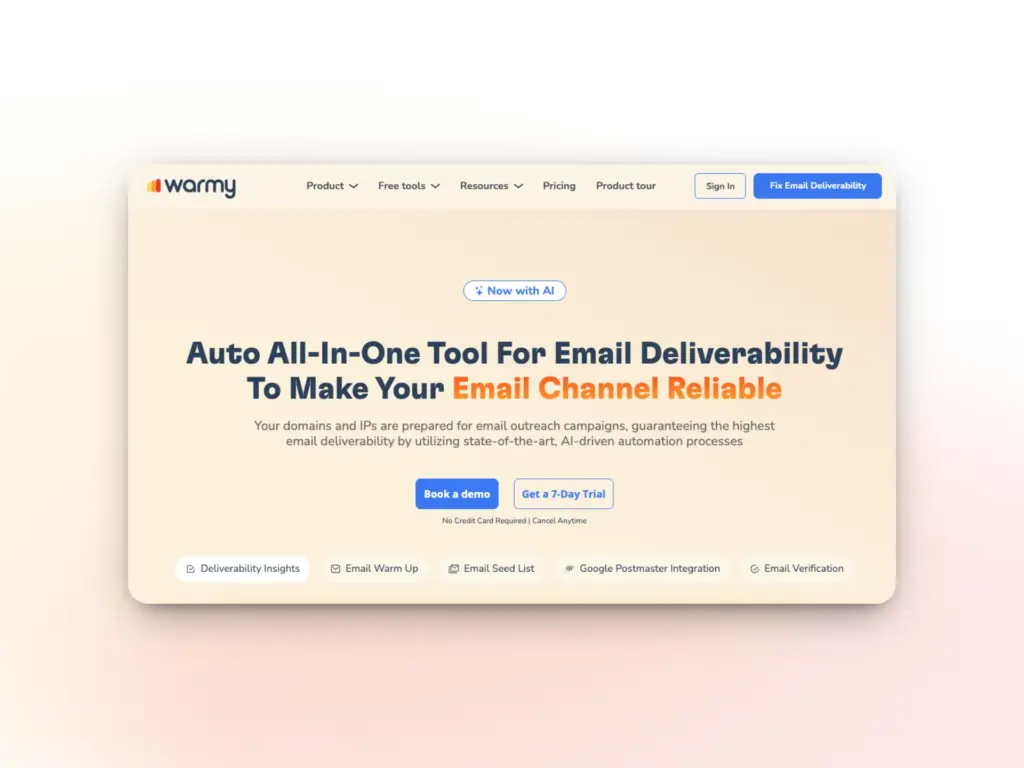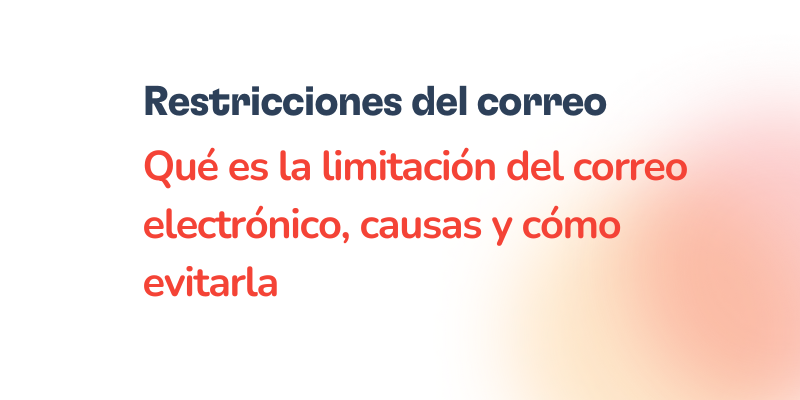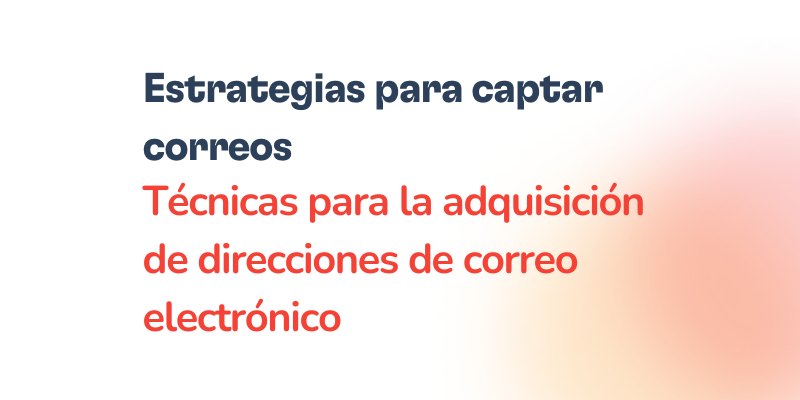“By COB” or “COB tomorrow” are frequently used phrases in email communication. And if you find yourself asking what it is and how you can use it, well, you’re not alone.
That’s precisely what this guide is for. Read below to learn what it is, how it compares with “EOD” and how to incorporate it cleanly into your writing.
COB meaning in email: quick definition
COB stands for “close of business.” It is a shorthand deadline used in email to mean “by the end of the business day” in a specified location.
But the definition of “end of business day” is dependent on the company and which time zone it’s operating in. Therefore, best to use COB with clock time and timezone (i.e., by COB today, 5:00 PM PT). This avoids missed handoffs, late approvals, and “whose COB did you mean?” confusion.
There’s no doubt that using COB in marketing or business emails is helpful. However, when not implemented properly, it can end up causing misalignments.
What does COB mean in business communication?
- Meaning of COB: Close of Business
- Acronym: COB (sometimes written C.O.B.)
In day-to-day work, COB establishes a cutoff or deadline for things that can and should happen during regular working hours. Using COB also conveys a sense of urgency.
This could be feedback, approvals, payments, deadlines for tasks, or just status updates. Because of this, COB is most commonly seen in B2B scenarios where teams work together spanning across roles and vendors.
COB vs. EOD: what’s the difference?
- COB (Close of Business) refers to the end of the business day, typically aligned with office hours (e.g., 5:00 PM local).
- EOD (End of Day) is broader and mostly interpreted as the end of a calendar day (11:59 PM) unless specified otherwise.
Rule of thumb:
- If you need it before the office closes for the day, say COB and include time + zone. Example: Design draft by COB today, 5:30 PM CET (Oct 13).
- If after-hours is acceptable, use EOD and define the exact time. Example: Final copy by EOD Friday, 11:59 PM ET (Oct 17).
When is Close of Business (COB)?
The exact time of “close of business” can vary depending on local norms and company policies.
Common COB times by region (US, UK/EU, APAC)
United States & Canada: 5:00 PM local (sometimes 5:30–6:00 PM).
Examples: 5:00 PM ET (UTC−5/−4), 5:00 PM PT (UTC−8/−7).
UK & Western Europe: 5:00–6:00 PM local.
Examples: 5:30 PM GMT/BST (UTC±0/±1), 6:00 PM CET/CEST (UTC+1/+2).
APAC: tends to vary by a wide range but many offices use 5:00–6:00 PM local.
Examples: 5:00 PM IST (UTC+5:30), 6:00 PM SGT (UTC+8), 5:30 PM AEST/AEDT (UTC+10/+11), 6:00 PM JST (UTC+9).
Pro tip: If your audience spans various regions, add quick conversions like this: “By COB today, 5:00 PM CET (4:00 PM GMT / 11:00 AM ET / 8:00 AM PT).”
How to interpret “COB today” vs. “COB tomorrow”
It might make sense to use “COB today” or “COB tomorrow” when you’re the one sending the email. Unfortunately when you share your availability with teammates or colleagues in different time zones, these two words can be easily lost in translation.
- COB today: Due by the end of today’s business hours in the stated time zone. Example: “Please send the invoice by COB today, 5:00 PM PT (Oct 13).”
- COB tomorrow: Due by the end of tomorrow’s business hours. Example: “Please review the draft by COB tomorrow, 6:00 PM CET (Oct 14).”
Watch out for these edge cases which can be confusing:
- Weekends/holidays: If you’re emailing on a day that isn’t a business day, “COB” doesn’t apply. Say “next business day” and name it. For example, if you’re emailing on a Sunday, say “Deliver by next business day (Monday), 5:00 PM ET (Oct 20).”
- Late requests: If you’re sending a request close to local COB, specify whether the same day is realistic or if you meant the next business day.
- Recipient-first rule: If not specified, many readers will assume their local COB. Avoid this confusion by being specific with the time + zone.
How to use COB in email marketing (with examples)
When deadlines affect conversions, approvals, or handoffs, COB meaning in email should be crystal-clear: include a clock time, time zone, and date. Below are ready-to-use templates for common email scenarios—each explains when to use COB vs EOD, and how to phrase deadlines so nobody asks “when is COB?” again.
Internal request template
When to use: You need a same-day action during business hours—e.g., final UTM check, creative tweak, list segment approval—before campaigns queue.
How to phrase it: Name COB today, specify time + time zone + date, and state the consequence if the deadline slips (e.g., reschedule).
Template #1:
Subject: Final Checks Needed by COB Today (5:00 PM PT, Oct 13)
Body:
Hi team,
Please review the promo links and confirm tracking by close of business (COB) today, 5:00 PM PT (Oct 13) so we can schedule the send for tomorrow morning.
If timing is tight, kindly reply with your earliest ETA.
Thanks!
[Sender]
Template #2:
Subject: Approvals by COB Today, 6:00 PM GMT (Oct 13)
Body:
Hey all,
Kind reminder to approve the email header and subject lines by COB today, 6:00 PM GMT (Oct 13). Without signoff, we’ll move the launch to the next available window.
Appreciate the quick turn!
[Sender]
External vendor template
When to use: You’re coordinating with an external agency, an email service provider (ESP), printer, or freelancer and you need to receive their deliverables during your office hours to keep the schedule.
How to phrase it: Use “by COB [weekday], [time zone] ([date])”, plus a checklist to reduce back-and-forth.
Template #1:
Subject: Creative Handoff by COB Thursday, 5:30 PM CET (Oct 16)
Body:
Hi [Name],
To stick to our production timeline, please ensure the final HTML and image assets are completed by COB Thursday, 5:30 PM CET (Oct 16).
Checklist:
- Inline-styled HTML (650px max width)
- Hero JPG (≤200 KB) + retina version
- Subject lines (3) + preview texts (3)
- Upload to: [folder link]
If anything should affect the deadline, please notify us 24 hours in advance.
Thanks,
[Sender]
Template #2:
Subject: Invoice & SOW Confirmation by COB Monday, 6:00 PM GMT (Oct 20)
Body:
Hi [Name],
Kindly send the invoice and confirm the SOW by COB Monday, 6:00 PM GMT (Oct 20) so we can release the campaign budget this sprint.
Docs can be uploaded here: [secure link].
Thanks in advance!
[Sender]
Status update template
When to use: You need a progress signal to plan resources or choose a send or launch window for the next day (e.g., QA pass or list readiness).
How to phrase it: Say “by COB tomorrow” with exact time + zone + date and specify what “green” vs “blocked” means.
Template #1:
Subject: Status Check by COB Tomorrow (6:00 PM CET, Oct 14)
Body:
Hello [Name],
Please share a status update by COB tomorrow, 6:00 PM CET (Oct 14) so we can lock the Thursday send.
- Green = Draft is approved, ready to move to the next phase
- Blocked = Rendering issues, technical bugs
- Reply “Green” or “Blocked + reason.”
Thanks!
[Sender]
Template #2:
Subject: Tomorrow’s Campaign Readiness by COB (5:00 PM ET, Oct 14)
Body:
Hi team,
Kind reminder to confirm list hygiene, segments, and suppression by COB tomorrow, 5:00 PM ET (Oct 14).
Checklist:
- remove invalid or inactive contacts in contact lists
- suppress recent complainers
- align regional sends to local time
Ping here with any blockers.
[Sender]
Alternative EOD version
When to use: If after-hours delivery is acceptable (e.g., long copy, late-evening rendering pass). Define EOD explicitly so nobody assumes “office close” but that it should be ready by the time you log in the next day.
How to phrase it: State “EOD = 11:59 PM [TZ] ([date])” or your team standard.
Template #1:
Subject: Draft v2 by EOD Friday (11:59 PM ET, Oct 17)
Body:
Hi [Name],
Please submit Draft v2 and have it completed by the end of day (EOD) Friday, 11:59 PM ET (Oct 17). For clarity, EOD = end of calendar day.
Focus items: Please shorten intro by 20%, add 2 benefit bullets, confirm CAN-SPAM footer.
Thanks!
[Sender]
Template #2:
Subject: QA Screenshot Package by EOD (11:59 PM PT, Oct 19)
Body:
Hey [Name],
Could you upload the multi-client screenshots by EOD (11:59 PM PT, Oct 19)?
Targets: Gmail, Outlook 365, Apple Mail, iOS native. Please flag any clipping or font fallback issues.
Folder: [link].
Thank you,
[Sender]
How to use “COB” clearly in emails: Best practices when using COB in email communication and email marketing
Using COB effectively enables your team to meet deadlines without getting lost in the confusion—often across teams and time zones. Meanwhile, in email marketing, COB is often used to inform recipients of promo deadlines or timeframes.
The thing you should always bear in mind when including COB in your emails is that the date, time, and time zone must be clear.
Always specify date, time, and time zone
The most important thing to remember when using COB in your emails is to always include the specific time, time zone, and date. Without these, recipients might be confused about what time you mean or risk missing the deadline.
Examples:
- “Please forward the reports by close of business today; 5:00 PM PT (Oct 13).”
- “Kindly confirm by COB Monday, 6:00 PM GMT (Oct 16).”
- “Promo ends by COB Friday, 5:00 PM GMT (Oct 17).”
Don’t assume everyone knows what COB means
It is advisable to spell out COB at least once—close of business (COB)—and then use the acronym afterwards. Always pair with a time + timezone every time to avoid misreads.
Avoid vague phrases
Certain phrases like ASAP, soon, or by COB without specifying the exact time are vague. These phrases create ambiguity, especially in a fast-paced, deadline-driven environment. As a result, recipients might not act in time, or they might misunderstand your urgency.
Create urgency ethically
Be mindful of the words you use when you’re trying to create urgency in your emails. Use COB when you need something at a specific end-of-day deadline during working hours, and EOD if the timing can stretch until the actual end of the day.
Examples:
- COB (End of Business): “Offer ends COB today, 5:00 PM PT.”
- EOD (End of Day): “Last chance! Offer ends EOD today, 11:59 PM ET.”
This distinction gives recipients clarity on whether they need to act before the end of business hours (COB) or if they have until midnight (EOD).
Deliverability tip: match send time to recipient’s local COB
For email deliverability, it’s important to match your email delivery time to the recipient’s local COB. Sending emails just before their COB increases the chances that they’ll see and act on your email within that critical business window.
How to do it: For B2B emails targeting professionals, send emails at least 60–120 minutes before the recipient’s local COB to ensure they see it within the final working hours of the day and can adjust accordingly.
Example: If your recipient is in New York (ET), schedule the email to send by 3:00 PM ET, leaving time for them to take action by their COB (5:00 PM ET).
Avoid misleading “COB today” claims for compliance and clarity
If your campaign includes an urgent offer with “COB today”, make sure the offer deadline matches the true close of business. Avoid misleading or vague claims like “COB today” if the offer is open for a longer time (e.g., if it runs until midnight).
Misleading claim: “COB today” when the offer actually ends at midnight.
Better practice: “Offer ends by 5:00 PM PT today.” or Or for after-hours: “Offer ends EOD today, 11:59 PM ET.”
Consider signature or footer notes for global recipients
If you’re dealing with an international audience, be sure to include a time zone disclaimer in the email signature or in your footer. This way, everyone—whether they’re in New York, London or Singapore—knows what the deadline is in their local time.
Example:
- “All times are PT (Pacific Time) unless otherwise specified. Please adjust accordingly for your time zone.”
- “COB today = 5:00 PM PT (UTC-7). Please confirm by the stated time to ensure timely action.”
Pitfalls to avoid when using COB
Although COB (Close of Business) can be a helpful way to establish firm deadlines in email marketing and work communication, here are some pitfalls to avoid. These can lead to confusion, missed deadlines and loss of clarity in your message. Here’s what to watch out for:
Assuming everyone shares your local COB
Do not assume that everyone operates in the same time zone or follows the same office hours as you. This can be especially problematic for global teams or recipients in different regions.
Why it’s a problem: If you send an email with COB and don’t specify the time zone, your recipients might interpret it differently.
What to do:
- Always include the specific time zone when using COB.
- If you’re working with a global audience, include both the recipient’s local time and your own time zone for clarity.
- If you’re unsure of the recipient’s time zone, use UTC or specify their city or region.
Example:
- Incorrect: “Please submit by COB today.”
- Correct: “Please submit by COB today, 5:00 PM PT (Oct 13).”
Using “COB tomorrow” on weekends or holidays
Using COB tomorrow in emails that fall on weekends or public holidays can be misleading if the recipient is not aware of when business hours will actually resume.
Why it’s a problem: The phrasing might imply that the task should be completed on the next working day when, in fact, the recipient might be off or unavailable due to a weekend or holiday.
What to do:
- Specify the next business day if you are referring to weekends or holidays.
- If the deadline crosses into the weekend, either use “next business day” or clearly state that COB Monday applies.
- If you know the holiday schedule, include it in your communication to prevent confusion.
Example:
- Incorrect: “Please finalize the document by COB tomorrow, 5:00 PM ET” (if it’s a Friday).
- Correct: “Please finalize the document by COB Monday, 6:00 PM ET (Oct 16), after the weekend holiday.”
Mixing “COB” and “EOD” in the same thread
Using both COB and EOD in the same email thread can create confusion. These two terms are often used interchangeably but may have subtle differences depending on context.
Why it’s a problem:
- COB typically refers to the end of business hours (e.g., 5:00 PM local).
- EOD is often assumed to mean 11:59 PM (end of calendar day), but some teams may treat EOD like COB (i.e., the end of their workday).
- Mixing them can confuse recipients about whether you’re asking for a task to be completed by office closing time or midnight.
What to do:
- Pick one term and stick to it for clarity in each email thread.
- If both are necessary, define each term to eliminate uncertainty (e.g., COB = 5:00 PM local and EOD = 11:59 PM).
- Don’t assume everyone will interpret them the same way.
Example:
- Incorrect: “Please submit the files by COB today and EOD tomorrow.”
- Correct: “Please submit the files by COB today, 5:00 PM PT and by EOD tomorrow, 11:59 PM ET.”
Maximize timely communication with successful delivery with Warmy.io

Understanding how to use COB clearly in your emails can help ensure that deadlines are met, tasks are completed on time, productivity is maximized, and expectations are aligned.
In both email marketing and business communications, COB plays a vital role in clarifying when actions need to be taken, and using it effectively can enhance your workflow efficiency.
But when deadlines are tight and deliverability is critical, there’s no room for mistakes.
That’s where Warmy.io can help:
- With Warmy, you can ensure your emails hit the inbox and aren’t lost in spam folders.
- Deliverability provides your email messages the visibility they need to reach your recipients before COB.
Warmy’s automated email warmup process make sure your emails are sent and that you’re able to maintain a high sender reputation. You can also monitor your mailbox health with real-time analytics, ensuring that your communication is always on time and reaches the right people.
Ready to boost your email communication with a stronger email reputation and smarter deliverability? Start your free trial with Warmy today, and ensure that your emails hit their deadline, every time.
FAQ
What does COB mean?
COB stands for Close of Business. It refers to the end of the business day, which is typically around 5:00 PM or 6:00 PM in a specific time zone. The exact time may vary depending on your company’s working hours, so you must clarify the time and time zone when you use COB in emails—especially when dealing with important business communications.
What does by COB today mean in email?
“By COB today” means that the action, task, or response is required by the end of the business day on the current day. To avoid confusion and stay aligned on expectations and deadlines, always specify the time and time zone when you use COB (e.g., by COB today, 5:00 PM PT).
When is EOD and what is end of business day?
EOD stands for End of Day, and it is commonly used to indicate the end of the calendar day. In many cases, people who use EOD mean 11:59 PM in the given time zone.
What is the difference between COB and EOD?
COB typically refers to the end of business hours (usually around 5:00 PM), EOD often extends to midnight.
What does “COB today” mean if you’re emailing recipients across different time zones?
If you’re in different time zones, “COB today” needs to be clearly defined to avoid confusion. Always include the exact time zone when setting deadlines. For example, here are some use cases:
- “COB today, 5:00 PM EST (Oct 13)” for someone using Eastern Standard Time.
- “COB today, 6:00 PM GMT (Oct 13)” for someone in the Greenwich Mean Time Zone.
When is “close of business” for remote or hybrid teams?
For remote or hybrid teams, COB can vary based on your team’s working hours, office culture, and location. To prevent any confusion, it’s crucial to establish a shared COB standard or time when business ends for the working day.








![Text on a white background reads: SMTP Error 450 4.0.0 How to Resolve [SOLVED], with emphasis on smtp error 450 4.0.0 and How to Resolve [SOLVED] in red font.](https://warmy-blog-wordpress-bucket.s3.amazonaws.com/wp-content/uploads/2025/11/19084901/SMTP450-400.webp)



